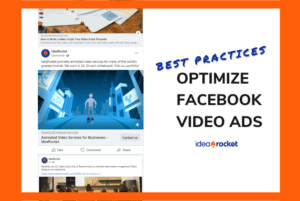Are you the project manager who has been tasked with producing a video that will please a sprawling set of video project stakeholders? This might not be news to you, but getting the video made may well be the easiest part of your job. The real challenge is navigating the shoals of corporate politics. Fear not! We have some tips to help you manage a video project.
Identify the Stakeholders
This is a balancing act. You don’t want to leave out a constituency and make them feel slighted, but neither do you want to create a working group so large that will be impossible to manage. A video project thrives when the right people are on the team. To identify the video project stakeholders you need to ask:
- Who will be deploying this video?
- Who is going to benefit from this video?
- Who has insight on the message this video is communicating?
Start reaching out to stakeholders as early as possible. You don’t want people coming into the project partway through with a whole different vision for how to manage a video project. A good practice here is to go wide early, then narrow down the group after the first meeting to a smaller, representative set of video project stakeholders. These will become your working group. A working group helps you manage a video project and keeps the project focused.
Go High
It never hurts to ask whether a higher-up might be interested in providing feedback to a video. Oftentimes, the sexiness and fun of an animated video project can attract attention you didn’t think you would be able to get. The opportunity to manage a video project, or at least contribute to one, is irresistible.
The danger if you don’t ask is that the higher-up will enter the process late and up-end everything after a lot of time and resources have already been committed. That’s probably the worst possible outcome for you personally and for the project. From our experience, early higher-level executive participation is nearly always a positive. Don’t leave them off the list of potential video project stakeholders.
Gather Your Team
Before the kick-off call with your video provider, you should consult with your working group on what your marching orders should be. Here are some key questions to think about:
- What is the objective of the video?
- What is the message of the video?
- How will the video be used or distributed?
- How long should the video be?
- What should the style be? Gather reference examples so you can have something to talk about with them.
- How should your branding be projected
Any More Checkpoints?
Is it your company’s policy to pass all communications through legal? Do you have a branding team that will need to review? If so, allow time in the schedule to clear these hurdles. You might not think of these groups as video project stakeholders, but they do have some power over when and how your project gets seen. Avoid unexpected delays by identifying them ahead of time and giving them a heads-up that a project is in the works.
Schedule Reviews
Your video project stakeholders probably have busy schedules. Are they responsive by email? If not, the safest option may be to schedule some time on the calendar for an in-person or on-line meeting where you can review the deliverables the animation studio has scheduled. (Typically, these will include the script drafts, animatic, and final animation, but it will vary by the nature of the project.)
Consolidate Feedback
When you get feedback from your working group, consolidate it into a list and send it out to everyone to confirm that you’ve understood their notes accurately. If you receive contradictory feedback, remember, it won’t resolve itself! Suggest a choice or compromise, and get acknowledgement from all stakeholders that they are happy with the resolution.
Bring Your Studio Into Your Meetings
While sometimes you will want some privacy in your working group to hash out your feelings about the work, it is often useful to bring the animation studio into the meetings. New ideas and possibilities may arise when there is a back-and-forth between the creators of the video and the group. Also, the studio will probably be better able to communicate their professional opinion directly to your video project stakeholders than you would if you tried to pass it on second-hand.
Identify Metrics of Success
You might think your job is done when the project is, but when you manage a video project follow-through is essential. What is your video trying to achieve? What are the metrics of its success? Be sure your KPIs are identified and you are set up to measure them. This well let you trumpet the video’s success or, at worst, it will let your team learn important lessons so you can improve on your performance.
A video is a tool. If your whole team buys into it early because they’ve had a chance to contribute to it, you’ll greatly improve then the chances that it will be used effectively and achieve the results you seek.
Good luck!



